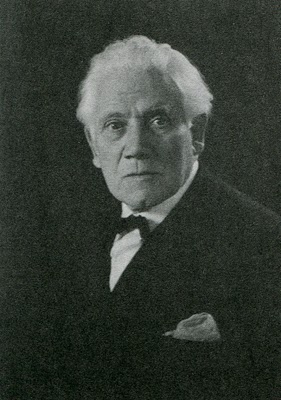Tradições académicas das mais antigas do país, a par das Coimbrãs, possuem características únicas realçando-se a participação dos Velhos junto dos Novos, o que permite reunir todos os anos entre 29 de Novembro e 6 de Dezembro em Guimarães, gerações e gerações de Nicolinos.
As Festas Nicolinas marcadas pelos usos e os costumes populares da região, pela influência do Classicismo e do Romantismo e pela intervenção crítica no fenómeno social, são motivos de celebração e diversão com os folguedos próprios da juventude, quase sempre acompanhados por um característico som de fundo: o troar dos bombos e caixas executando os característicos Toques Nicolinos.
As Festas englobam vários números que constituem a sua matriz: as Novenas, as Ceias, o Pinheiro, as Posses, o Magusto, as Roubalheiras, o Pregão, as Maçãzinhas e as Danças.
As Novenas são celebrações religiosas em honra de Nossa Senhora da Conceição realizadas na Capelinha de Azurém às quais assistem os Estudantes que, tocando os tambores, foram chamando o povo a participar.
As Ceias servem para juntar à mesa os Nicolinos que seguem para o Pinheiro.
O Pinheiro é erigido (ou “enterrado”) no fim de um cortejo, transportado em carros de bois, acompanhado pelos zabumbas, Estudantes que percutem incessantemente os seus bombos e caixas, constituindo esse mastro anunciador, o prelúdio, a anunciação das Festas.
As Posses não são mais que ofertas que os Estudantes vão recolhendo por várias casas da cidade e que servem para alimentar o Magusto que realizam a seguir e que partilham com o povo.
As Roubalheiras servem para fazer aparecer junto ao Pinheiro bens de todo o tipo que, por pirraça, foram desviados durante a noite.
O Pregão consiste na declamação de um texto satírico-retórico em verso que serve, principalmente, para exaltação de símbolos locais e nacionais, evocação dos clássicos, elogio das donzelas e feroz crítica social, e que é recitado pelo pregoeiro em vários pontos da cidade por onde se deslocam em préstito os Estudantes acompanhados, mais uma vez, pelos seus tambores.
As Maçãzinhas são, no fim de um cortejo de carros alegóricos, colocadas na ponta de uma lança enfeitada de fitas e oferecidas às donzelas que esperam nas sacadas e que retribuem com pequenas ofertas.
As Danças são, no sentido lato, rábulas, pequenas representações e cantorias que servem de diversão e incisiva crítica de costumes e personalidades, levadas à cena numa sala de teatro, embora no passado se tenham realizado, também, na rua ou em casas particulares e servem de encerramento das Festas com o entoar do Hino Escolástico.
Nas décadas mais recentes tem-se realizado um Baile que reúne novos e velhos Nicolinos prolongando, de certa maneira, as Festas, num repasto convivial seguido de actuação musical.
Dating, at least, from the 17th century, the Festas de S. Nicolau, the [’St. Nicholas Festival’] is a typical celebration held by the students in Guimarães to honor the students’ patron saint.
The ‘St Nicholas Festival’, one of the oldest academic traditions in Portugal (second only to the traditions of Coimbra) has unique features and notably the participation of ‘old-timers’ side-by-side with ‘the young’: thus generations and generations of Nicolinos [’the celebrators of St Nicholas’] get together in Guimarães from the 29th of November to the 6th of December.
Another name for this Festival is Festas Nicolinas [’Nicholine Festivities’]. The Nicolinas have been shaped by the local folklore and traditions, the influence of Classicism and Romantics and satirical intervention in public and social events. These festivities are the reason for celebration, amusement and peculiars pranks of youth. There is always a characteristic background sound: drums thundering the traditional rhythmic patterns known as Toques Nicolinos [’Nicholine drumbeats’].
The Festival is, in fact, a series of events:
Novenas [’Novenae’]: religious ceremonies held at the Azurém chapel in honor of the Immaculate Conception of Our Lady. These ceremonies are attended by the students who have previously called the people - always playing drums - to take part in them.
Ceias [’Suppers’]: every restaurant is literally crowded with nicolinos, who enjoy themselves before the great Pinheiro parade.
Pinheiro [’Pine tree’]: a great nightly parade along the streets of Guimarães. The Nicolinos look for the tallest pine tree of the district of Guimarães. The pine tree is then paraded on ox-carts escorted by thousands of Nicolinos playing their drums endlessly. At the end of the parade the pine is ‘erected’ (or ‘buried’) on the ground. This mast announces the beginning of the festivities.
Posses [’Tenures’]: these are offers (mainly chestnuts and wine) which have been gathered by students all over the town. At night the Nicolinos start a bonfire by the Pinheiro to bake the chestnuts and drink the wine at the Magusto and everyone is welcome to take part in the Magusto.
Roubalheiras [’Thefts’]: in the following morning all sort of objects, ‘misted’ by roguish students during the night, appear by the Pinheiro.
Pregão [’Proclamation’]: ‘Nicolino’ herald cries out a satirical and rhetorical text in verse praising local and national symbols, evoking the Classics, extolling maidens and making sharp criticism on social happenings.
Maçãzinhas [’small apples’]: the Nicolinos ride through the town, holding long wooden sticks, which ramble spears, decorated with colorful ribbons. The Maçãzinhas are picked from the tip of the spears by the maidens, who leave small gifts in return.
Danças [’Dances’]: they are, in a broad sense, short plays, gags and songs to amuse and criticize customs and personalities. Nowadays the Danças are staged at the theatres, although they used to be performed on the streets or even in private houses. The ‘Scholastic Anthem’ is sung at the end of the dances. This is the closing event of the Festival.
Over the recent decades a Ball has been held which gathers together young and old Nicolinos extending the Festas into a socializing and friendly repast followed by musical performance.
